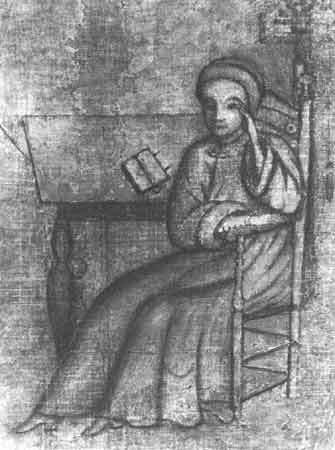
It's not yet clear where to go next with this blog, meaning, which if any thread to develop and follow through with. That may not be necessary, in any case. But as I noted in my initial post, the term "fourthriver" denotes (and connotes) something important about fieldwork practice, something I know relatively well. I'll certainly take that thread up again soon. But meanwhile, I want to respond to a comment from a reader who, noting my long association with Philadelphia, and more broadly with the state of Pennsylvania, asked whether I'd ever worked with Quaker or Mennonite communities. In fact, I've done fieldwork in Quaker communities over the years – I'd worked with Quaker farmers in Bucks County some time ago; I've also worked with Mennonites in the southern tier of New York, and elsewhere.
Generally speaking, the Quakers were of English origin, while the Mennonites were of German origin. In fact, a Quaker community was located at a very early date in the Germantown section of Philadelphia, settling there sometime in the 1680s. They occupied the area in and around Germantown, along with a German community that had settled there around 1690, under the leadership of Daniel Pastorius. Pastorius was an educated man, and a polyglot, who adapted to what were virtually frontier conditions in Philadelphia at that time, learning artisan trades and working with his hands to demonstrate and promote self-sufficiency within his community. Pastorius was the author of an interesting book, written in several languages, which he titled Bee-Hive, and of which he writes, "In these seven Languages I this my book do own", though the books seems to be written mainly in three languages – English, German, and Latin. Pastorius also wrote the first legal treatise in North America, among his many other contributions to the development of American culture and society.
When I moved back to Philadelphia after an eleven year sojourn in Pittsburgh, I was determined to become more involved, and to learn more about the city and its history. My guess is that almost everyone thinks of Ben Franklin when they think of Philadelphia. Probably fewer think of John Bartram, the great naturalist (and a Quaker, by the way). But how many people have heard of Johannes Kelpius? (That name Latinized from his birth name, Johann Kelp.)
I first learned of Kelpius in a roundabout way – while reading a book, a sort of biography, of John Bartram! The book, written by an American writer named Josephine Herbst, was New Green World. And in it, she devotes a paragraph to Kelpius which piqued my interest. Here's what she wrote, in a discussion of Bartram's garden:
Though his [Bartam's] garden became famous for the variety of its native species, rivaling all other American gardens in that respect, it was not the first botanical garden nor the only one. Probably the first botanical garden belonged to the brotherhood of German mystics, led by Kelpius, who in 1694 built their steep-roofed cloister, Das Weib in der Wüste, on the banks of the Wissahickon. There they studied mathematics, experimented in alchemy, and, while they read the sky with telescopes, awaited the second coming of Christ. In their forest refuge, gardens ran down the glen, with a mainstay of herbs for medicinal purposes. Dr. Christopher Witt, who lived in Germantown, must have taken fire from Kelpius's garden as well as imbibing strong drafts of alchemy. A painter of sorts, he even made an oil portrait of Kelpius shortly after their acquaintance in 1704, the first year of his residence in America. Kelpius died that same year but some of his plants must have found their way to Dr. Witt's garden, and were passed on to Bartram. Dr. Witt's neighbor, Pastorius, cultivated herbs and plants, also, and in his Medicus Dilectus wrote of herbal remedies.
Kelpius died in 1708, not in 1704, though Herbst’s description is otherwise correct. That aside, there were a number of features of this passage that stimulated interest – the reference to alchemy, the group's observatory, the botanical herbs, and so on – and I decided to investigate in order to learn more. I'll report on some of what I learned in my next post.